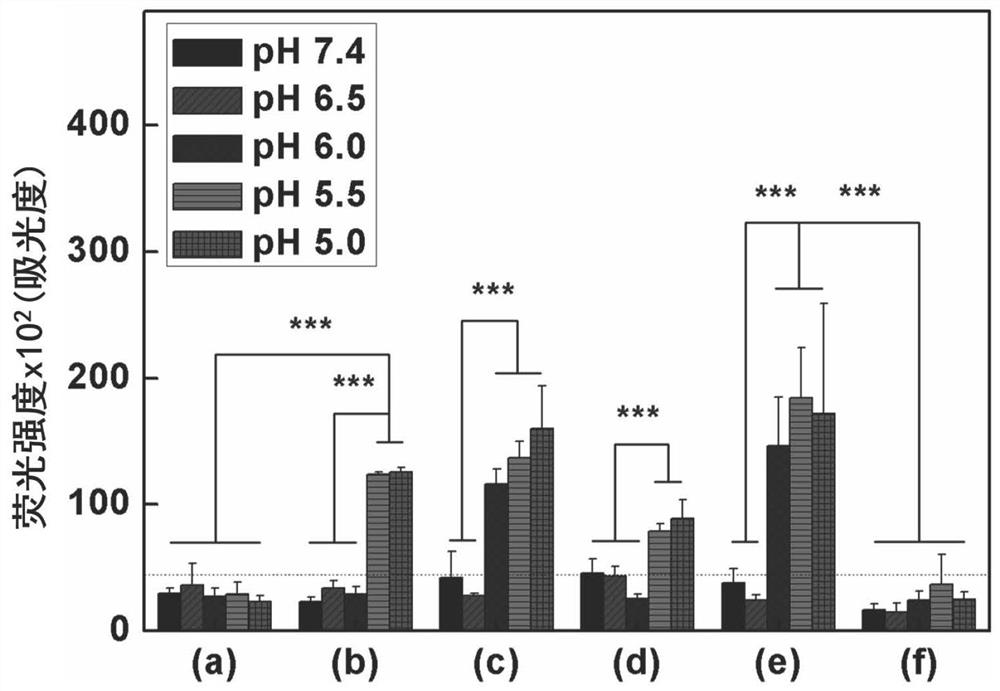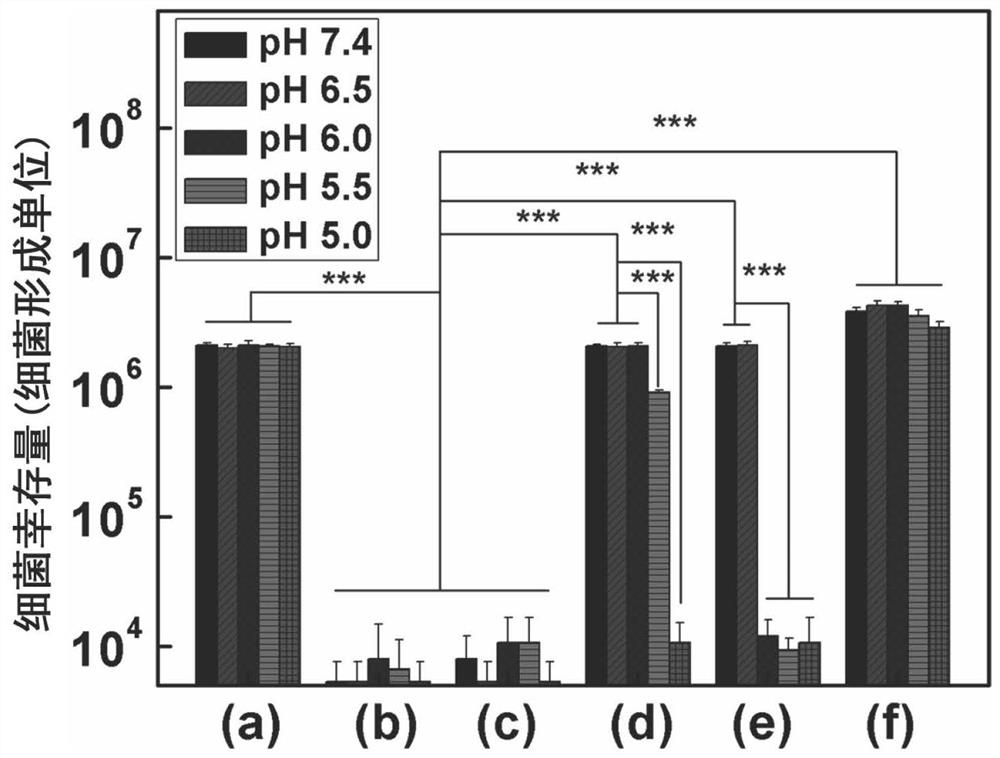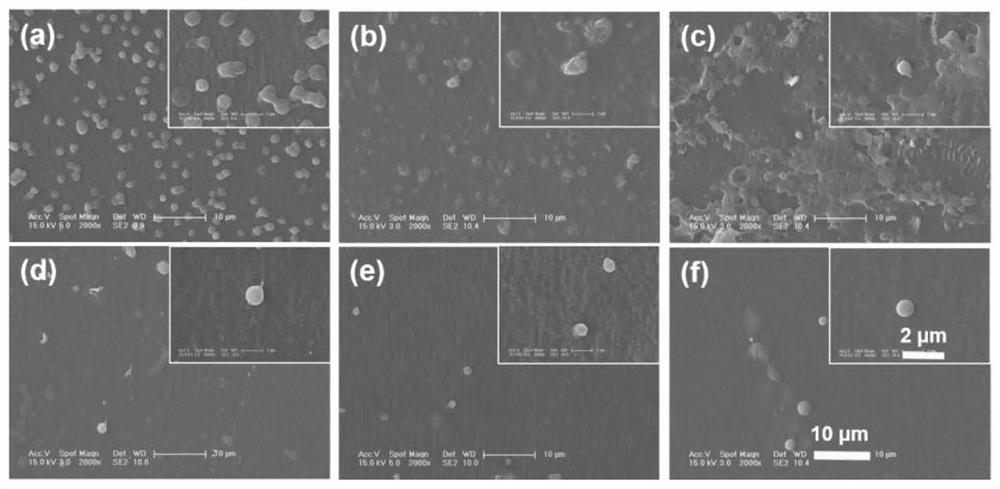Polymer brush with bacterial responsiveness and preparation method thereof
A polymer brush and responsive technology, applied in the field of bacteria-responsive polymer brushes and their preparation, can solve the problems of bacterial adhesion, affecting surface antibacterial properties, accumulation of dead bacteria, etc.
- Summary
- Abstract
- Description
- Claims
- Application Information
AI Technical Summary
Problems solved by technology
Method used
Image
Examples
preparation example Construction
[0042] The invention provides a method for preparing a polymer brush with bacteria responsiveness, comprising:
[0043] S1) Grafting a photoinitiator on the surface of the polymer substrate to obtain a photoinitiator-modified polymer substrate;
[0044] S2) placing the photoinitiator-modified polymer substrate in a responsive monomer solution, and ultraviolet light triggers graft polymerization to obtain a responsive precursor-modified polymer substrate;
[0045] S3) placing the responsive precursor-modified polymer substrate in an anti-adhesion monomer solution, and ultraviolet light triggers graft polymerization to obtain a responsive precursor-modified polymer substrate with anti-adhesion;
[0046] S4) Place the responsive precursor and the anti-adhesion co-modified polymer substrate in a carboxyl activator solution for activation, then place it in a diamine solution for reaction, and then put it in an acid anhydride solution for reaction, to obtain Polymer substrates co-m...
Embodiment 1
[0068] Plasma pretreatment was carried out on the low-density polyethylene film, and its working parameters were: power 100W, pressure 20Pa, gas flow rate 20cc / min, temperature 25°C, time 3min; then the pretreated sample was placed in 10.0wt% 2- In the isopropylthioxanthone acetone solution, 200W high-pressure mercury lamp was irradiated for 20min, and then the sample was washed with ethanol and deionized water for 20min successively under the condition of oscillating in a water bath at 100Hz, and then the sample was placed in 5.0wt% 2-carboxylate Ethacrylate aqueous solution, 200W high-pressure mercury lamp irradiation for 6 minutes, the sample was washed as above, placed in 10.0wt% hydroxyethyl methacrylate aqueous solution, 200W high-pressure mercury lamp irradiation for 6 minutes, the sample was washed as above, placed in 2.5wt% 2-morpholineethanesulfonic acid, 6.0wt% 1-(3-dimethylaminopropyl)-3-ethylcarbodiimide hydrochloride and 3.0wt% N-hydroxysuccinimide (the three Rat...
Embodiment 2
[0078] Plasma pretreatment was carried out on the high-density polyethylene film, and its working parameters were: power 110W, pressure 30Pa, gas flow rate 30cc / min, temperature 27°C, time 4min; then the sample was placed in acetone with 11.0wt% thioxanthone In the solution, a 210W high-pressure mercury lamp was irradiated for 21 minutes, and then the sample was washed with ethanol and deionized water for 20 minutes successively under the condition of 110 Hz water bath oscillation, and then the sample was placed in 6.0wt% acrylic acid aqueous solution, and a 210W high-pressure mercury lamp was irradiated for 7 minutes. After cleaning as above, place in 11.0wt% acryloyloxyphosphorylcholine aqueous solution, 210W high-pressure mercury lamp irradiation for 7min, after cleaning the sample as above, place in (3-(benzo[d][1,3]dioxa -5-yl)-2-iodo-5-methoxyphenyl)boronic acid (concentration 12wt%) aqueous solution, reacted for 1.1h at a reaction temperature of 5°C, and then placed the ...
PUM
| Property | Measurement | Unit |
|---|---|---|
| Thickness | aaaaa | aaaaa |
Abstract
Description
Claims
Application Information
 Login to View More
Login to View More - R&D
- Intellectual Property
- Life Sciences
- Materials
- Tech Scout
- Unparalleled Data Quality
- Higher Quality Content
- 60% Fewer Hallucinations
Browse by: Latest US Patents, China's latest patents, Technical Efficacy Thesaurus, Application Domain, Technology Topic, Popular Technical Reports.
© 2025 PatSnap. All rights reserved.Legal|Privacy policy|Modern Slavery Act Transparency Statement|Sitemap|About US| Contact US: help@patsnap.com



